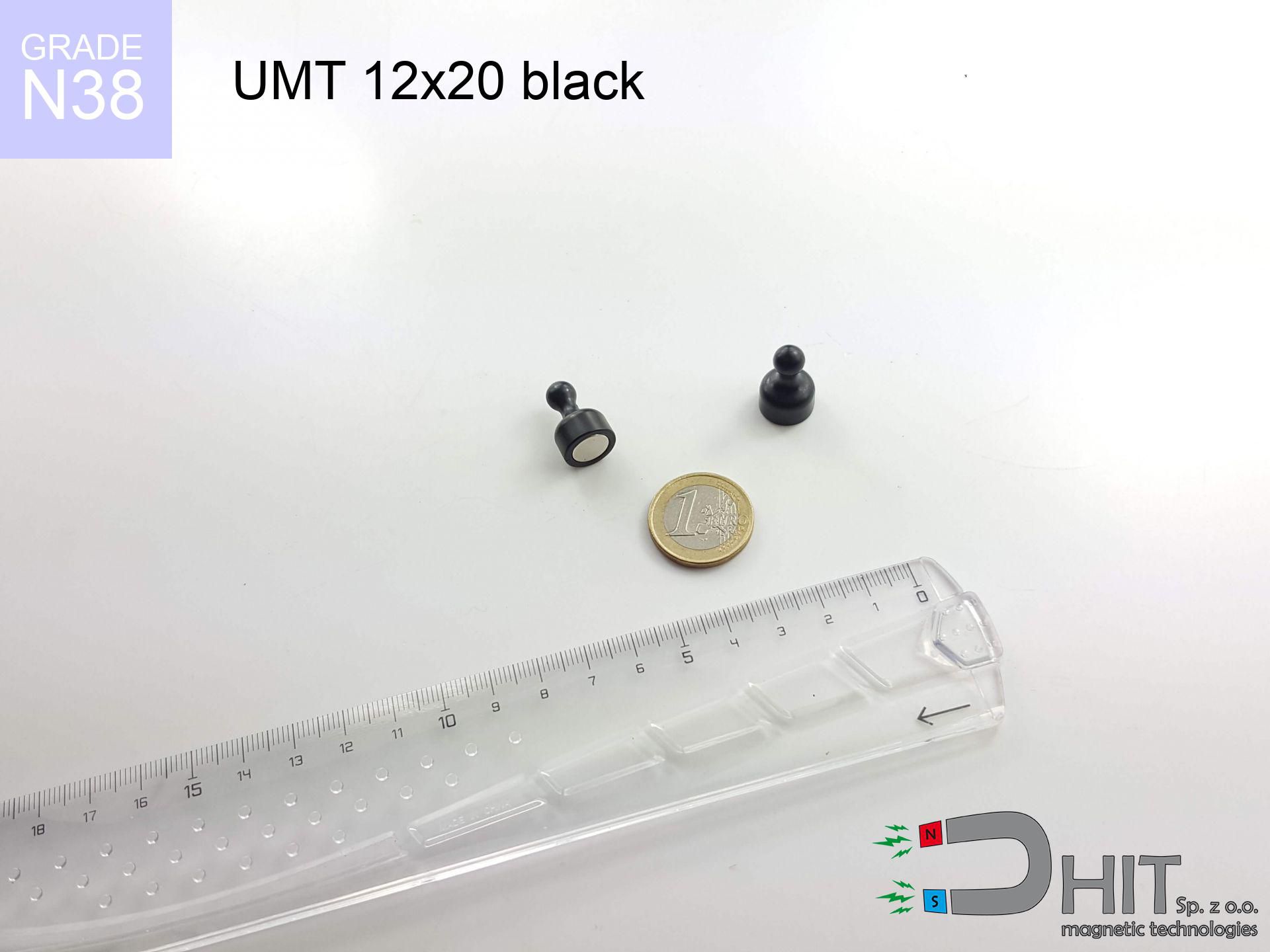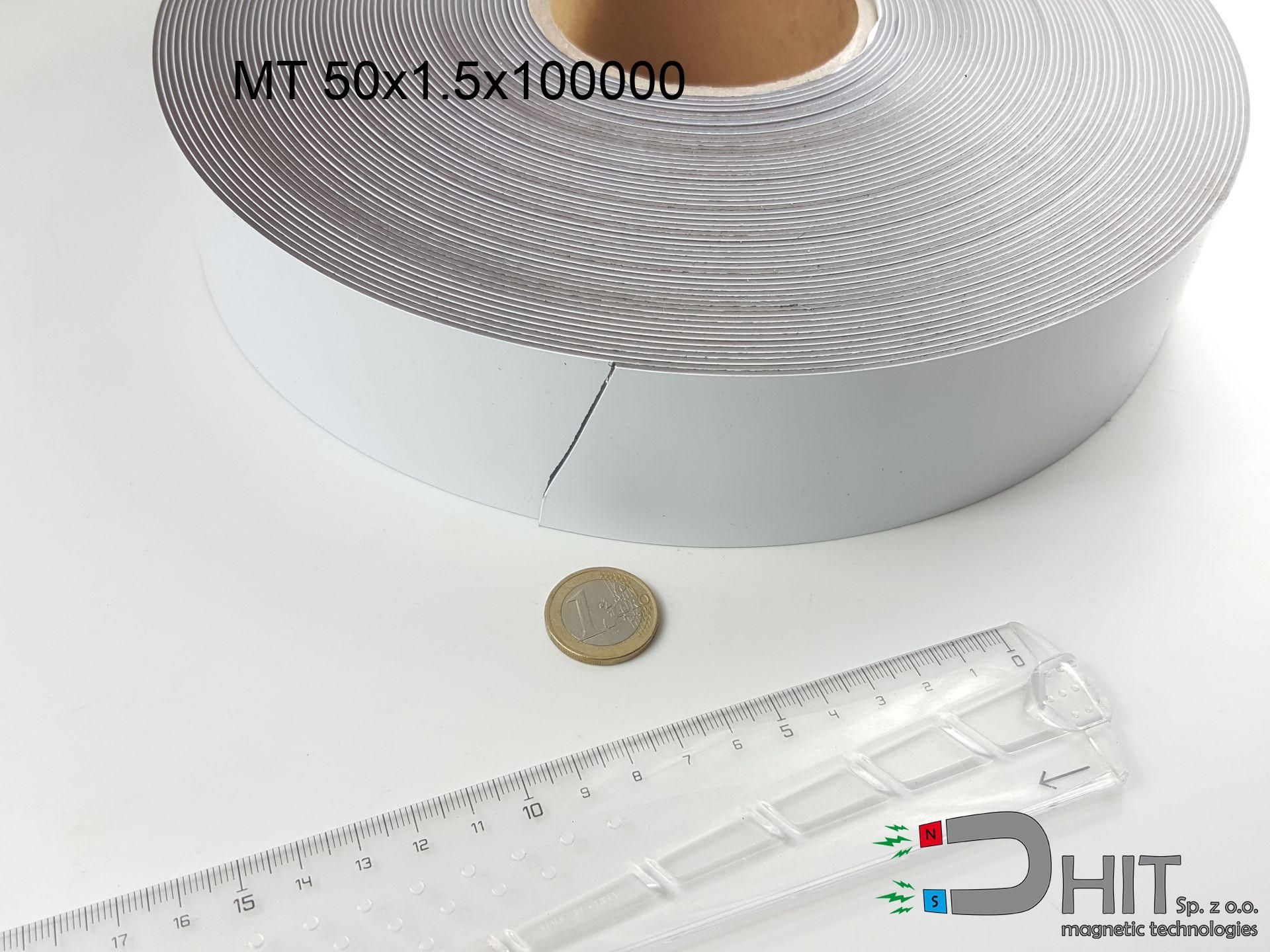UMT 12x20 black / N38 - board holder
board holder
Catalog no 230285
GTIN/EAN: 5906301814375
Diameter Ø
12 mm [±1 mm]
Height
20 mm [±1 mm]
Weight
3.5 g
Coating
[NiCuNi] Nickel
1.894 ZŁ with VAT / pcs + price for transport
1.540 ZŁ net + 23% VAT / pcs
bulk discounts:
Need more?
Call us
+48 888 99 98 98
or get in touch by means of
request form
the contact page.
Lifting power as well as form of a magnet can be reviewed with our
power calculator.
Orders submitted before 14:00 will be dispatched today!
Product card - UMT 12x20 black / N38 - board holder
Specification / characteristics - UMT 12x20 black / N38 - board holder
| properties | values |
|---|---|
| Cat. no. | 230285 |
| GTIN/EAN | 5906301814375 |
| Production/Distribution | Dhit sp. z o.o. |
| Country of origin | Poland / China / Germany |
| Customs code | 85059029 |
| Diameter Ø | 12 mm [±1 mm] |
| Height | 20 mm [±1 mm] |
| Weight | 3.5 g |
| Coating | [NiCuNi] Nickel |
| Manufacturing Tolerance | ±1 mm |
Magnetic properties of material N38
| properties | values | units |
|---|---|---|
| remenance Br [min. - max.] ? | 12.2-12.6 | kGs |
| remenance Br [min. - max.] ? | 1220-1260 | mT |
| coercivity bHc ? | 10.8-11.5 | kOe |
| coercivity bHc ? | 860-915 | kA/m |
| actual internal force iHc | ≥ 12 | kOe |
| actual internal force iHc | ≥ 955 | kA/m |
| energy density [min. - max.] ? | 36-38 | BH max MGOe |
| energy density [min. - max.] ? | 287-303 | BH max KJ/m |
| max. temperature ? | ≤ 80 | °C |
Physical properties of sintered neodymium magnets Nd2Fe14B at 20°C
| properties | values | units |
|---|---|---|
| Vickers hardness | ≥550 | Hv |
| Density | ≥7.4 | g/cm3 |
| Curie Temperature TC | 312 - 380 | °C |
| Curie Temperature TF | 593 - 716 | °F |
| Specific resistance | 150 | μΩ⋅cm |
| Bending strength | 250 | MPa |
| Compressive strength | 1000~1100 | MPa |
| Thermal expansion parallel (∥) to orientation (M) | (3-4) x 10-6 | °C-1 |
| Thermal expansion perpendicular (⊥) to orientation (M) | -(1-3) x 10-6 | °C-1 |
| Young's modulus | 1.7 x 104 | kg/mm² |
Elemental analysis
| iron (Fe) | 64% – 68% |
| neodymium (Nd) | 29% – 32% |
| boron (B) | 1.1% – 1.2% |
| dysprosium (Dy) | 0.5% – 2.0% |
| coating (Ni-Cu-Ni) | < 0.05% |
Sustainability
| recyclability (EoL) | 100% |
| recycled raw materials | ~10% (pre-cons) |
| carbon footprint | low / zredukowany |
| waste code (EWC) | 16 02 16 |
Other products
Advantages and disadvantages of Nd2Fe14B magnets.
Strengths
- They do not lose power, even during nearly 10 years – the reduction in strength is only ~1% (based on measurements),
- Magnets perfectly protect themselves against demagnetization caused by external fields,
- Thanks to the metallic finish, the coating of Ni-Cu-Ni, gold-plated, or silver-plated gives an modern appearance,
- The surface of neodymium magnets generates a unique magnetic field – this is a key feature,
- Made from properly selected components, these magnets show impressive resistance to high heat, enabling them to function (depending on their shape) at temperatures up to 230°C and above...
- In view of the potential of accurate forming and customization to specialized requirements, NdFeB magnets can be created in a wide range of forms and dimensions, which expands the range of possible applications,
- Versatile presence in innovative solutions – they serve a role in hard drives, electric motors, advanced medical instruments, as well as other advanced devices.
- Thanks to their power density, small magnets offer high operating force, occupying minimum space,
Cons
- To avoid cracks under impact, we suggest using special steel holders. Such a solution protects the magnet and simultaneously increases its durability.
- We warn that neodymium magnets can lose their power at high temperatures. To prevent this, we suggest our specialized [AH] magnets, which work effectively even at 230°C.
- They rust in a humid environment. For use outdoors we suggest using waterproof magnets e.g. in rubber, plastic
- We recommend a housing - magnetic mechanism, due to difficulties in producing threads inside the magnet and complex shapes.
- Possible danger to health – tiny shards of magnets can be dangerous, in case of ingestion, which gains importance in the context of child safety. Additionally, small elements of these devices can complicate diagnosis medical when they are in the body.
- Higher cost of purchase is one of the disadvantages compared to ceramic magnets, especially in budget applications
Holding force characteristics
Maximum lifting force for a neodymium magnet – what contributes to it?
- with the use of a yoke made of special test steel, ensuring full magnetic saturation
- with a cross-section no less than 10 mm
- with a surface perfectly flat
- without the slightest clearance between the magnet and steel
- for force applied at a right angle (pull-off, not shear)
- at ambient temperature room level
Impact of factors on magnetic holding capacity in practice
- Gap (betwixt the magnet and the metal), since even a microscopic distance (e.g. 0.5 mm) can cause a reduction in force by up to 50% (this also applies to paint, rust or dirt).
- Pull-off angle – remember that the magnet holds strongest perpendicularly. Under sliding down, the capacity drops drastically, often to levels of 20-30% of the maximum value.
- Plate thickness – insufficiently thick steel does not close the flux, causing part of the power to be wasted to the other side.
- Chemical composition of the base – low-carbon steel attracts best. Alloy steels lower magnetic properties and lifting capacity.
- Surface condition – ground elements ensure maximum contact, which increases force. Uneven metal reduce efficiency.
- Heat – NdFeB sinters have a sensitivity to temperature. When it is hot they lose power, and at low temperatures they can be stronger (up to a certain limit).
Lifting capacity testing was carried out on a smooth plate of optimal thickness, under a perpendicular pulling force, however under attempts to slide the magnet the holding force is lower. Moreover, even a small distance between the magnet’s surface and the plate decreases the lifting capacity.
Precautions when working with neodymium magnets
Do not give to children
Strictly store magnets out of reach of children. Choking hazard is high, and the effects of magnets clamping inside the body are very dangerous.
Heat warning
Regular neodymium magnets (grade N) lose magnetization when the temperature goes above 80°C. Damage is permanent.
Protect data
Avoid bringing magnets near a wallet, laptop, or TV. The magnetism can irreversibly ruin these devices and erase data from cards.
Pacemakers
For implant holders: Strong magnetic fields disrupt electronics. Maintain minimum 30 cm distance or ask another person to handle the magnets.
Bone fractures
Watch your fingers. Two powerful magnets will join instantly with a force of several hundred kilograms, crushing everything in their path. Exercise extreme caution!
Combustion hazard
Powder produced during cutting of magnets is self-igniting. Avoid drilling into magnets without proper cooling and knowledge.
Risk of cracking
Watch out for shards. Magnets can fracture upon uncontrolled impact, ejecting sharp fragments into the air. We recommend safety glasses.
Sensitization to coating
A percentage of the population have a contact allergy to Ni, which is the typical protective layer for neodymium magnets. Frequent touching can result in dermatitis. We recommend wear protective gloves.
Threat to navigation
Be aware: neodymium magnets produce a field that interferes with sensitive sensors. Keep a safe distance from your phone, device, and navigation systems.
Immense force
Exercise caution. Neodymium magnets act from a distance and snap with massive power, often faster than you can react.



![SM 25x300 [2xM8] / N52 - magnetic separator SM 25x300 [2xM8] / N52 - magnetic separator](https://cdn3.dhit.pl/graphics/products/sm-25x300-2xm8-dij.jpg)
![UMH 25x8x45 [M5] / N38 - magnetic holder with hook UMH 25x8x45 [M5] / N38 - magnetic holder with hook](https://cdn3.dhit.pl/graphics/products/umh-25x8x45-m5-cep.jpg)
![BM 750x180x70 [4x M8] - magnetic beam BM 750x180x70 [4x M8] - magnetic beam](https://cdn3.dhit.pl/graphics/products/bm-750x180x70-4x-m8-zif.jpg)


